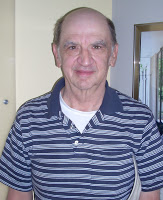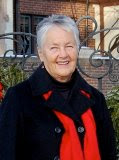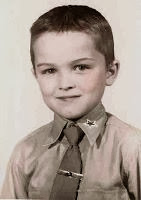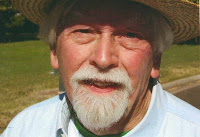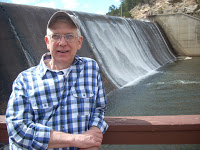(a)The tragic tale of Niobe is one of
the most memorable Greek myths, for Niobe’s story features a striking example
of the consequences of hubris, a Greek term defined as arrogance or excessive
pride. This myth was popular in ancient literature, poetry and art. Therefore,
it is not a surprise that the legend of Niobe appears in one of our oldest and
best sources for Greek myths, the Iliad of Homer.
Her father
was Tantalus, king of a town above Mount Sipylus in Anatolia, but we do not
know exactly who her mother was. Niobe had two brothers, Broteas and Pelops,
who would later be a legendary hero and would give his name to Peloponnese.
When Niobe grew up, she got married to Amphion, king of Thebes. This was a
turning point in her life and a series of tragic events followed, to give her a
distinct place in one of the most tragic dramas in Greek mythology. Niobe and
Amphion gave birth to fourteen children, seven sons and seven daughters.
The fatal mistake and the horrible
crime at a ceremony held in honor of Leto, the mother of the divine twins,
Apollo and Artemis, who was also living in Thebes, Niobe, in a fit of
arrogance, bragged about her fourteen children. In fact, Niobe said that she
was superior to Leto, as she had fourteen children and not only two. When the
twins knew this insult, they got enraged and at once, came down to Earth to
kill the children of Niobe. Apollo, the god of light and music, killed all
seven of Niobe’s sons with his powerful arrows in front of their mother’s eyes.
Although Niobe was pleading Apollo to feel mercy for her last surviving son,
Apollo’s lethal arrow had already left his bow to find its mark with deadly
accuracy, thus wiping out all the male descendants of Niobe.
Artemis, the virgin goddess of
nature and hunting, killed Niobe’s seven daughters with her lethal arrows and
their dead bodies were lying unburied for nine days. Turning into a rock, devastated by the slaughter of his children, Amphion committed suicide. Some
versions say that he too was killed by Apollo when he tried to avenge his
children’s deaths. And so it was that Niobe’s entire family had been wiped out
by the gods in a matter of moments, and in deep anguish, she ran to Mount
Sipylus.
There she pleaded [with the] Gods to
[put] … an end to … her pain. Zeus felt sorry for her and transformed her into a
rock, to make her feelings [express themselves from the] … stone. However, even
as a rock, Niobe continued to cry. Her endless tears poured forth as a stream
from the rock and it [her statue] seems to stand as a moving reminder of a
mother’s eternal mourning. To this day, Niobe is mourning for her children and
people believe that her faint image can still be seen carved on a limestone
rock cliff on Mount Sipylus, with the water that seeps out of the porous rocks
bearing a strong allusion to her ceaseless tears.
The meaning of the Myth the tragic
tale of Niobe centered on the consequences of hybris, a strange concept in the
Greek antiquity, which said that, if you act with arrogance towards the Gods,
then you will be punished. Actually Niobe’s story is a classic example of the
wrath of gods against human weaknesses and has been beautifully narrated in
Homer’s Iliad. The tale of Niobe also finds mention in Metamorphoses, a
narrative poem, written by the renowned Roman poet Ovid, who, however, has
inverted the traditionally accepted order and portrayed the desires and
conquests of the gods with aversion, while elevating human passions to a higher
Source:
(b)O Mary, don’t you weep, don’t you mourn! Version of
Bruce Springsteen
“O Mary Don’t You Weep”
Well if I
could, I surely would,
Stand on the rock where Moses stood, Pharoh’s army got drownded,
Oh Mary don’t you weep.
Oh Mary don’t you weep no more,
Oh Mary don’t you weep no more,
Pharoh’s army got drownded,
Oh Mary don’t you weep.
Well Mary wore three links of chain,
On every link was Jesus name,
Pharoh’s army got drownded,
Oh Mary don’t you weep.
Oh Mary don’t you weep no more,
Oh Mary don’t you weep no more,
Pharoh’s army got drownded,
Oh Mary don’t you weep.
Well one of these nights about 12 o’clock,
This old world is gonna rock,
Pharoh’s army got drownded,
Oh Mary don’t you weep.
Well Moses stood on the Red Sea shore,
Smote the water with a two by four,
Pharoh’s army got drownded,
Oh Mary don’t you weep.
Oh Mary don’t you weep no more,
Oh Mary don’t you weep no more,
Pharoh’s army got drownded,
Oh Mary don’t you weep.
Well old Mister Satan he got mad,
Missed that soul that he thought he had,
Pharoh’s army got drownded,
Oh Mary don’t you weep.
Brothers and sisters, don’t you cry,
There’ll be good times by and by,
Pharoh’s army got drownded,
Oh Mary don’t you weep.
Oh Mary don’t you weep no more,
Oh Mary don’t you weep no more,
Pharoh’s army got drownded,
Oh Mary don’t you weep.
God gave Noah the rainbow sign,
No more water, but fire next time,
Pharoh’s army got drownded,
Oh Mary don’t you weep.
Oh Mary don’t you weep no more,
Oh Mary don’t you weep no more,
Pharoh’s army got drownded,
Oh Mary don’t you weep.
Pharoh’s army got drownded,
Oh Mary don’t you weep,
Oh Mary don’t you weep no more,
Oh Mary don’t you weep no more.
Pharoh’s army got drownded,
Oh Mary don’t you weep.
The phrase vale
of tears (Latin vallis lacrimarum) is a Christian phrase referring to the
tribulations of life that Christian doctrine says are left behind only when one
leaves the world and enters Heaven. The term “valley of tears”
is also used sometimes. (Wikepedia).
Wolfgang
Amadeus Mozart. His Lacrimosa (weeping) is part of his Requiem Mass 1792. Was
completed by Sysmayr.
Cry
Me a River
Now
you say you’re lonely
You cry the whole night through
Well, you can cry me a river, cry me a river
I
cried a river over you.
Now
you say you’re sorry
For being so untrue
Well, you can cry me a river, cry me a river
I
cried a river over you
You
drove me, nearly drove me out of my head
While you never shed a tear
Remember, I remember all that you said
Told me love was too plebeian
Told
me you were through with me
And now you say you love me
Well, just to prove you do
Come on and cry me a river, cry me a river
I
cried a river over you
You drove me, nearly drove me out of my head
While you never shed a tear
Remember, I…
© 16 Oct 2017
About
the Author
I was born in 1944, I lived most of my life in New York City,
Queens County. I still commute there. I worked for many years as a Caseworker
for New York City Human Resources Administration, dealing with mentally
impaired clients, then as a social work Supervisor dealing with homeless PWA’s.
I have an apartment in Wheat Ridge, CO. I retired in 2002. I have a few
interesting stories to tell. My boyfriend Kevin lives in New York City. I
graduated Queens College, CUNY, in 1967.

